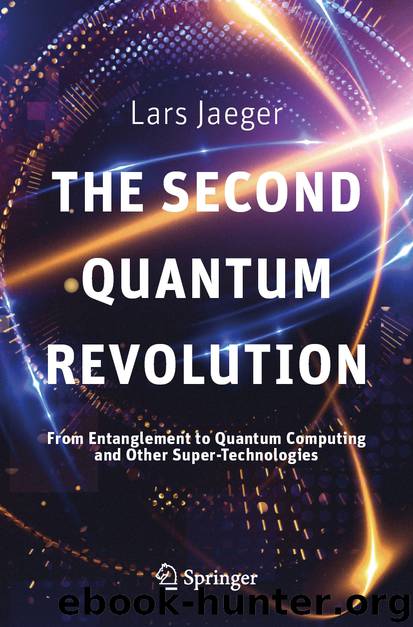The Second Quantum Revolution by Lars Jaeger

Author:Lars Jaeger
Language: eng
Format: epub
ISBN: 9783319988245
Publisher: Springer International Publishing
Very Close to the Sun
However, the geometrization of gravitation involves a complication that the example of the rubber mat does not reveal. The initially two-dimensional rubber mat deforms into the third dimension. But the space we consider in describing gravity is already three-dimensional. What should it bend into? We need another, a fourth dimension. And here we reach the limits of our intuition.
The thought that this fourth dimension is time was not new. Einstein had already linked space and time into a coherent four-dimensional space-time continuum in the special theory of relativity , but this space-time did not yet possess its own dynamics. It had to wait for the general theory of relativity to become a dynamic entity. (Of course, the deformation by masses does not take place in the time dimension alone; the four-dimensional space-time as a whole is subject to distortion.2) But how is it that we do not notice this dynamic in our everyday life and describe gravity as a force in a static space-time without too much of an error? The answer is that any significant effects of space-time curvature occur only at very high mass densities of a kind that do not exist in our Solar System. However, if we know what to look out for, we can actually observe the effects of space-time curvature in our close cosmic neighbourhood.
One of these effects that astronomers already knew about before Einstein’s time and were unable to explain using Newton’s theory of gravitation was the perihelion rotation of Mercury, the innermost planet of our Solar System. Like every planetary orbit, Mercury’s is elliptical, so when it circles around the Sun, there exists a point closest to the Sun, called the perihelion. With every revolution of Mercury around the Sun, this perihelion moves a little farther round. However, the observed value of this perihelion precession (rotation) is different from the one obtained by Newtonian physics. For a while astronomers had assumed that this discrepancy must be the gravitational effect of an as yet discovered planet (they already had a name for it: Vulcan). But with Einstein’s theory of general relativity, this effect could be explained without the need for a ghost planet.
Many other phenomena in our cosmos which have their origin in the curvature of space-time have been observed over the last hundred years or so since the publication of the general theory of relativity . The most recent such observations concern gravitational waves, whose existence Einstein had already predicted in 1916 and which were observed for the first time in 2015 (Rainer Weiss, Kip Thorne, and Barry Barish were awarded 2017 Nobel Prize in Physics for this). These are distortions of space-time which propagate in a wavelike manner, analogous to the electromagnetic waves of light.
The existence of a unified space-time and its deformation by massive bodies are experimentally well supported.
Download
This site does not store any files on its server. We only index and link to content provided by other sites. Please contact the content providers to delete copyright contents if any and email us, we'll remove relevant links or contents immediately.
The Complete Stick Figure Physics Tutorials by Allen Sarah(7339)
Secrets of Antigravity Propulsion: Tesla, UFOs, and Classified Aerospace Technology by Ph.D. Paul A. Laviolette(5336)
Thing Explainer by Randall Munroe(3911)
The River of Consciousness by Oliver Sacks(3573)
The Order of Time by Carlo Rovelli(3163)
How To by Randall Munroe(3077)
A Brief History of Time by Stephen Hawking(2994)
I Live in the Future & Here's How It Works by Nick Bilton(2963)
What If?: Serious Scientific Answers to Absurd Hypothetical Questions by Randall Munroe(2670)
The Great Unknown by Marcus du Sautoy(2664)
Midnight in Chernobyl by Adam Higginbotham(2519)
Blockchain: Ultimate Step By Step Guide To Understanding Blockchain Technology, Bitcoin Creation, and the future of Money (Novice to Expert) by Keizer Söze(2467)
Networks: An Introduction by Newman Mark(2383)
The Meaning of it All by Richard Feynman(2320)
Easy Electronics by Charles Platt(2309)
The Tao of Physics by Fritjof Capra(2247)
Midnight in Chernobyl: The Untold Story of the World's Greatest Nuclear Disaster by Adam Higginbotham(2200)
When by Daniel H Pink(2098)
Introducing Relativity by Bruce Bassett(2097)
